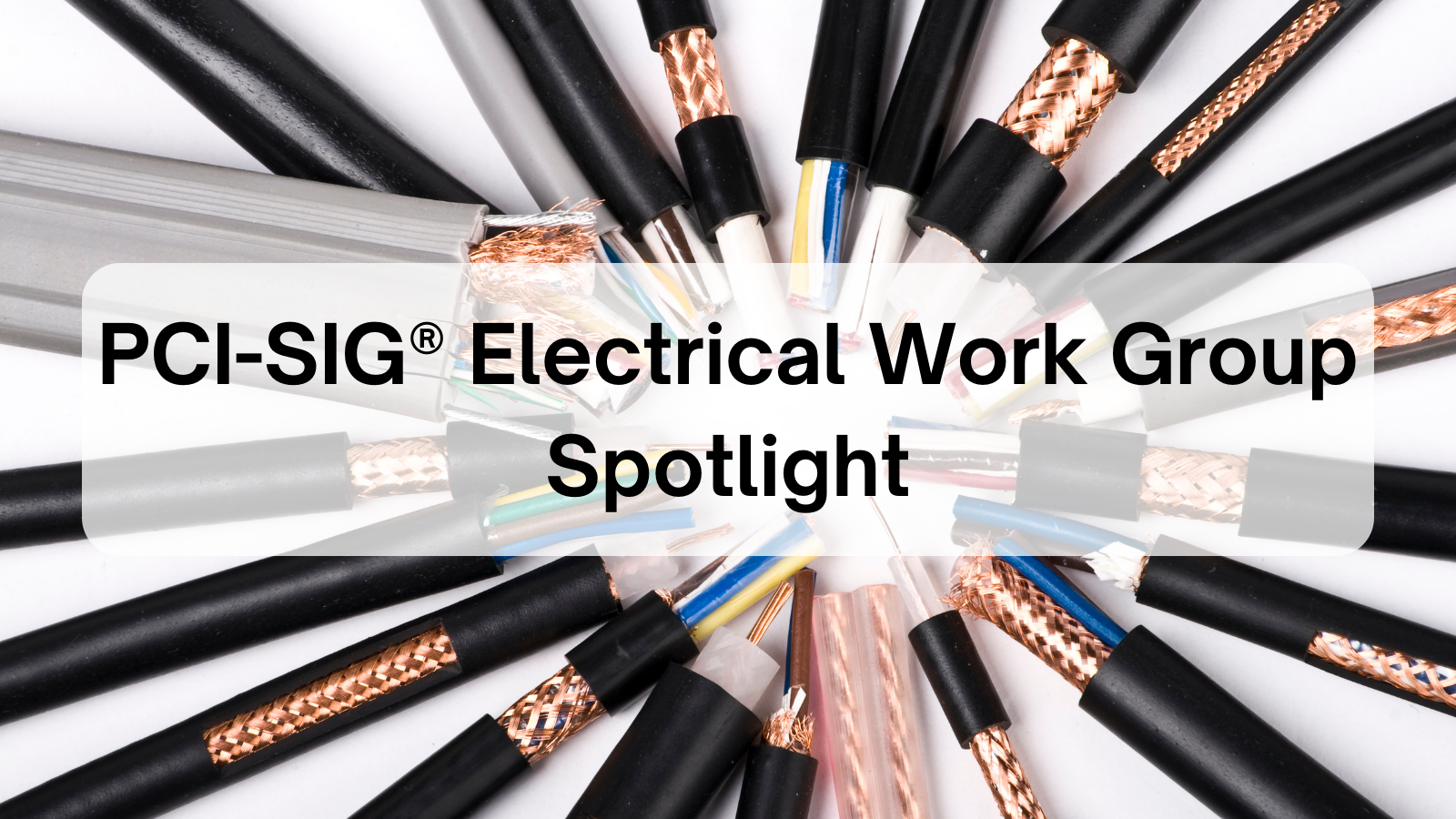PCI-SIG® Electrical Work Group Spotlight

PCI-SIG® is comprised of multiple technical work groups (TWGs) that develop PCI Express® (PCIe®) technology. Work groups are open to all PCI-SIG member company representatives and allow companies to shape current and future PCIe specifications. In the following interview, the PCI-SIG Electrical Work Group (EWG) Chairs Mohiuddin Mazumder of Intel and Gerry Talbot of AMD explain the mission of the Electrical Work Group, the benefits of being involved and how PCI-SIG members can join.
What is the goal of the Electrical Work Group?
The goal of the Electrical Work Group is to enable the ecosystem to develop PCIe products that interoperate electrically. The EWG’s main tasks include:
- Developing the base electrical specification
- Collaborating closely with other work groups, such as the Protocol Work Group, to ensure that the PCI-SIG base specification offers a holistic solution
- Defining the electrical interoperability testing, as part of the larger PCI-SIG compliance program
- Providing expert help to PCI-SIG members
What is the base electrical specification?
The electrical specification is a chapter in the full PCI-SIG base specification. It defines how the silicon physical layer operates and it includes a reference channel as an example. This allows vendors to individually develop products to the specification, while ensuring that their devices can interoperate with each other. In addition, most of the other form factor specifications, such as the cabling specification, rely on the base electrical specification.
Why was the Electrical Work Group formed?
The EWG was formed because building the electrical aspect of an interoperable PCIe device is highly complex. It requires a dedicated group of individuals to define the electrical section of the specification and ensure it is well integrated in the full PCI-SIG base specification. Additionally, the EWG works with the PCI-SIG compliance workgroup to define the electrical interoperability test of the PCI-SIG Compliance Program.
What specifications and features are the Electrical Work Group currently working on?
The EWG is developing the next generation of electrical interconnect and silicon features to address data array and controlling impairments (i.e., jitter, noise) and the capabilities of the channels. The EWG also established a sub-team focused on developing next-generation cable specifications.
What are some significant accomplishments of the Electrical Work Group?
The EWG has achieved many accomplishments since the PCIe 1.0 specification was released over 20 years ago. The most recent accomplishment was overcoming the biggest challenge in PCI-SIG history: doubling the data rate to 64 GT/s with the PCIe 6.0 specification. Not only was this work difficult, but the official Compliance Workshop testing was unveiled early, in two and a half years, versus the standard three years.
How do you keep members engaged?
The Electrical Work Group meets virtually every week on Thursdays and by attending these EWG meetings, members have opportunities to work with diverse industry talent to solve the most pressing electrical and cabling needs. The EWG shares all the technical work through SharePoint with workgroup attendees, enabling members to distribute the latest electrical developments to their member companies. By participating early in the specification development, members can understand the background behind the specification, which makes it easier for their companies to become early adopters.
How does the Work Group benefit from member involvement?
Member involvement and collaboration ensures that the collective knowledge of industry experts is baked into the final electrical base specification. If there is a particular issue that some members of the EWG have not thought about, then diverse member participation can bridge that gap and bring valuable contributions to the overall specification development.
How can PCI-SIG members get involved in the Electrical Work Group?
The Electrical Work Group is open to individuals from all PCI-SIG member companies. If interested, please request access via Causeway.
If your company is interested in joining PCI-SIG and helping to develop future PCIe specifications, become a member today.
